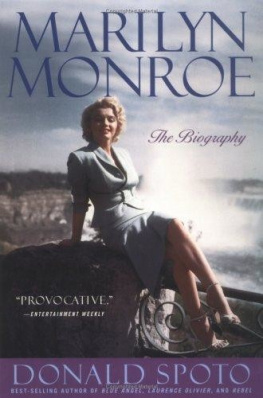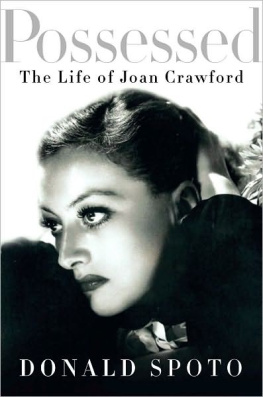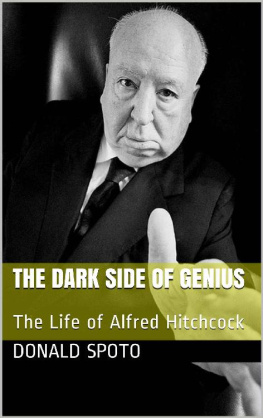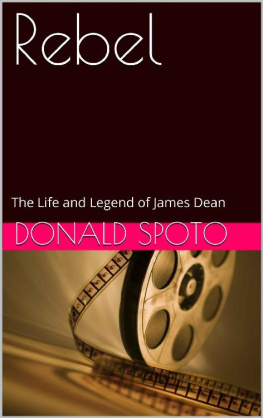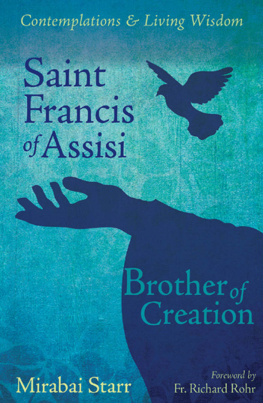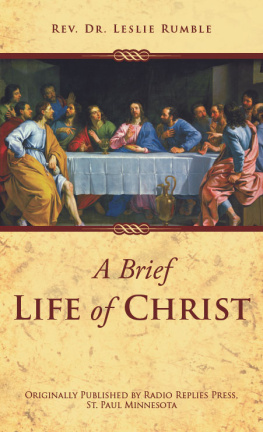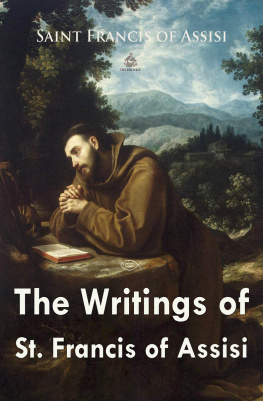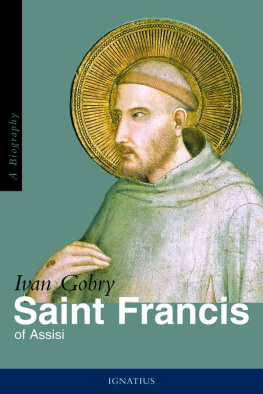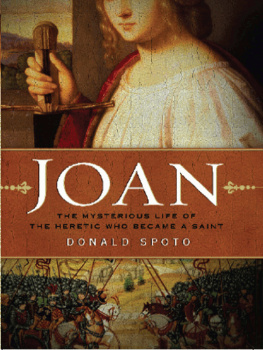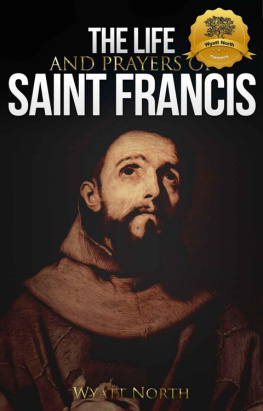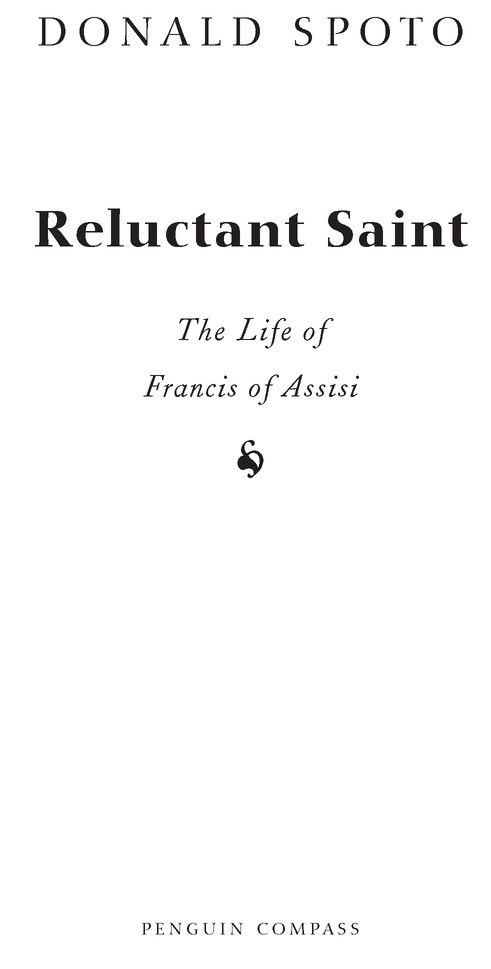Contents
Landmarks
Table of Contents
RELUCTANT SAINT
Donald Spoto, who earned his Ph.D. degree in theology at Fordham University, taught religious studies, Biblical literature, and Christian mysticism on the university level for more than twenty years. He is the author of eighteen other books, among them The Hidden Jesus: A New Life.
BY DONALD SPOTO
Reluctant Saint: The Life of Francis of Assisi (2002)
Jacqueline Bouvier Kennedy Onassis: A Life (2000)
The Hidden Jesus: A New Life (1998)
DianaThe Last Year (1997)
Notorious: The Life of Ingrid Bergman (1997)
Rebel: The Life and Legend of James Dean (1996)
The Decline and Fall of the House of Windsor (1995)
A Passion for Life: The Biography of Elizabeth Taylor (1995)
Marilyn Monroe: The Biography (1993)
Blue Angel: The Life of Marlene Dietrich (1992)
Laurence Olivier: A Life (1991)
Madcap: The Life of Preston Sturges (1990)
Lenya: A Life (1989)
Falling in Love Again: Marlene DietrichA Photo Essay (1985)
The Kindness of Strangers: The Life of Tennessee Williams (1985)
The Dark Side of Genius: The Life of Alfred Hitchcock (1983)
Camerado: Hollywood and the American Man (1978)
Stanley Kramer Film Maker (1978)
The Art of Alfred Hitchcock (1976; revised 1991 and 1999)
for Frederica von Stade
great artist and cherished friend
To sing is to pray twice.
- SAINT AUGUSTINE
Acknowledgments
My litany of saints includes many generous people and good friends whose practical assistance and support accompanied me at every stage in the preparation of this book.
Alice Gallin, O.S.U., facilitated my introduction to the Franciscan Institute of St. Bonaventure University, one of the worlds great repositories of Franciscana. I must thank Margaret Carney, O.S.F., who is the Institutes director and the Dean of the School of Franciscan Studies, and Noel H. Riggs, the Executive Administrative Assistant.
At the Walters Art Museum, Baltimore, I received important assistance from Cathleen A. Fleck and Teresa Nevins in the Department of Manuscripts and Rare Books and from Kate Lau, the coordinator of photographic services.
The expertise of several gifted physicians was invaluable: in this regard, I am grateful to Graham Waring, M.D., who discussed epidemiology, tropical diseases and intestinal illnesses relative to the life of Francis of Assisi; and to John Hofbauer, M.D., and Laura Fox, M.D., who provided critical information on the etiology and history of trachoma.
For assistance with special problems in medieval Italian history, John Darretta as usual offered timely helpas did Irene Mahoney, O.S.U., whose wide-ranging scholarship includes fine points in the history of Western Christian spirituality.
In Rome and Assisi, my tasks were much facilitated by the guidance of two first-rate scholars, Lewis Falb and Gerald Pinciss. Also in Rome and Assisi, I was much helped by Stefano Bonimi, who seems to know how to get anywhere and find anything. In Paris, Matthieu Louanges made important and obscure sources available to me.
For 25 years, Elaine Markson has been my literary representative; she has guided my career with unfailingly astute counsel and faithful friendship. In her offices, I receive constant daily support and cheerful assistance from Gary Johnson, Geri Thoma, Sara De Nobrega, Elizabeth Shenkman and Kirsten Neuhaus.
The idea for this book originated with George Stelzner, who thought it would also provide the basis for an important film documentary. That it has been doubly realized owes much to his encouragementnot to say his dedication as the producer of the motion picture.
Richard P. Kot, my editor at Viking, offered not only the benefits of his scholarship, his love of language and his passion for clarity in all its exactitude: Rick has also extended to me the long arm of his friendship. He guided this book at every step and contributed to it wisely. I am glad and grateful that we are even now committed to further collaboration.
On the dedication page appears a name well known to millions, for she is one of the great artists of our time.
The mezzo-soprano Frederica von Stade, who has appeared on the stage of every major opera house and concert hall in the world, continues to delight audiences as she has for over 30 yearsjust as an enormous company of admirers values her many recordings. Composers have created operas for her, conductors from all over the world have vied to work with her and singers, actors, writers and directors (both the experts and the novices) learn a great deal from her impeccable musicianship and unerring interpretations. It is universally acknowledged that, in both operatic roles and in recital, she has very few peers.
Flicka (as she is known to her friends) also spends her considerable energies on behalf of a wide range of important humanitarian and educational organizations; her profound dedication to people and their needs is inspiring. A woman of extraordinary generosity, warmth and spiritual wisdom, she enriches every life she touches.
I rejoice in the depth of her devoted friendship, her encouragement and her constancy. Francis of Assisi, who was a singer and a poet, would have applauded her artistry and admired her faith. Like him, Frederica von Stade makes the world a better placeand in ways past counting.
D.S.
Los Angeles
Easter 2002
Introduction
ALMOST 40 YEARS AGO, the translators of a biography of Francis of Assisi undertook a count of the books and articles the French author had consulted. Their final tally was 1,575 works in four languages. Up to and since that time, no saint has been the object of more attention from historians and biographers.
But even the last centurys most important books on Francisby Sabatier (1906), Jrgensen (1912), Fortini (1959) and Engelbert (1965)were severely limited. Since their publications, discoveries made in a number of fields, and especially the results of Franciscan scholarship since 1990, have been extremely significant and directly affect our understanding of the times and events in Franciss life. Curiously, no writer (so far as I can tell) has taken these studies into account and pursued their implications for a thorough and up-to-date biography. Hence the book you are now reading.
At the outset of my research, I quickly surveyed about 350 articles in five languages, covering only the contributions of the past decadearchival work in the fields of medieval history, biography, medicine and education; the annals of art; and literary, linguistic and archaeological studies. As my investigation expanded to include the contributions of those who worked before 1990, I became ever more convinced of the need for a new life of Francis for the general reader who is not a specialist.
At first, the sheer weight of new materialand the data that continued to surface each monthseemed overwhelming. In fact, there were so many important books and articles by learned men and women that, in the early months of my research, I nearly despaired: there were resources, for example, on the fine points of assessing manuscripts from the Middle Ages; on medieval economics; on the history of the Crusades; on the chronicles of the commune of Assisi; on the early years of Francis; on his illnesses and the tradition of the stigmata; and on the problems inherent in studying commentaries that in some cases are almost 800 years old.


